Archivo de noticias y eventos
1251 - 1300 de un total de 2404
También puede acceder a la lista de noticias publicadas en los medios relacionadas con el Instituto de Astrofísica de Andalucía - CSIC.
Pages

|
30/06/2014 - 01/07/2014
Workshop for the WSO Working Group and Spanish UV Astronomy Granada |
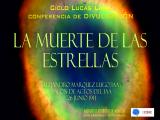
|
26/06/2014 - 17:00
La muerte de las estrellas La charla comenzará describiendo qué es una estrella, cómo se forma y evoluciona y, dependiendo de sus características, cuál será su final. Nos detendremos en la fase de nebulosa planetaria y trataremos el enriquecimiento químico del medio interestelar. Alejandro Márquez Lugo |

|
26/06/2014 - 14:30
The brief lives of massive stars as witnessed by interferometry Massive stars present the newest and perhaps most challenging opportunity for long baseline interferometry to excel. Large distances require high angular resolution both to study the means of accreting enough mass in a short time and to split new-born multiples into their components for the determination of their fundamental parameters. Dust obscuration of young stellar objects require interferometry in the infrared, while post-... Dr. Christian Hummel |

|
24/06/2014 - 14:30
Remote sensing: survival strategies in the jungle of averaging kernels and covariance matrices Outer space, stars, exoplanets, planets in the solar system, and even the Earth's middle and upper atmosphere have in common that it is inconvenient, expensive, and often technically unfeasible to make in situ measurements there. Remote sensing, e.g., by means of radiance measurements, is a relatively cheap and convenient alternative. The conversion of the measured radiances to the quantities of interest, e.g., temperature and composition... Dr. Thomas von Clarmann |

|
11/06/2014 - 10:00
La evolución temporal de la convección en la penumbra de las manchas solares El Sol presenta varias incógnitas todavía sin resolver. Una de ellas es la conocida como el calentamiento penumbral. La penumbra es una región brillante cuya intensidad llega a ser aproximadamente del 75% de la del Sol en calma, incluso teniendo un campo magnético fuerte. A pesar de los esfuerzos realizados por numerosos autores aún no se conoce cómo se transporta la energía en la... Sara Esteban Pozuelo Sala de Juntas del Instituto de Astrofísica de Andalucía (IAA-CSIC) |
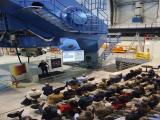
|
11/06/2014
El Observatorio de Calar Alto, a la cabeza en los muestreos de galaxias y en la búsqueda de planetas extrasolares La cúpula del telescopio de 3,5 metros del Observatorio de Calar Alto ha acogido hoy la presentación de CALIFA y CARMENES, dos proyectos internacionales que constituirán una referencia en sus respectivos campos |
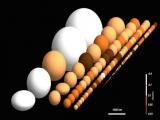
|
10/06/2014
Se obtienen las características de ciento treinta y dos objetos transneptunianos El satélite Herschel de la Agencia Espacial Europea ha recogido información sobre 132 de los cuerpos transneptunianos. Este análisis ha hecho posible determinar algunas de las características de estos objetos tan diversos, tales como su diámetro o la composición de su superficie |

|
05/06/2014 - 14:30
Status of Astronomy in East Africa Activities of astronomy in East Africa are driven the East African Astronomical Society (EAAS) supported mainly by the IAU/OAD. A positive trend in the development of astronomy activities in the region is characterised by the inclusion of astronomy into the curriculum at all levels, construction of astronomy observatories and research centres (e.g. Entoto Observatory -first light last week), opening new MSc... Dr. Pheneas Nkundabakura |
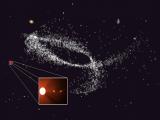
|
04/06/2014
Mundos antiguos en torno a una estrella "foránea" Se han hallado dos planetas en torno a la estrella de Kapteyn que, posiblemente, formaba parte de una galaxia satélite que fue absorbida por la Vía Láctea |
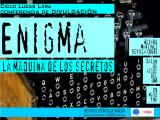
|
29/05/2014 - 17:00
Enigma. La máquina de los secretos La máquina Enigma, utilizada en la II Guerra Mundial por el ejército alemán para el cifrado de todas sus comunicaciones, se ha convertido en un icono de la ingeniería de todos los tiempos. Álvaro Martínez Sevilla |

|
29/05/2014 - 14:30
IAA Computing Service A cluster is defined as a collection of interconnected stand-alone workstations or PCs cooperatively working together as a single, integrated computing resource. Cluster Computing has become the paradigm of choice for executing large-scale science, engineering, and commercial applications. This is due to their low cost, high performance, availability of off-the-shelf hardware components and freely accessible software tools that that can be... Rafael Parra |
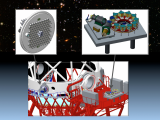
|
21/05/2014
Se firma el contrato para la construcción de MEGARA, el próximo instrumento óptico para el Gran Telescopio Canarias MEGARA es el primer espectrógrafo capaz de observar la emisión del gas situado entre las galaxias, o de captar la luz de estrellas individuales en otras galaxias |

|
15/05/2014 - 14:30
Deep spectroscopy of planetary nebulae In nebulae astrophysics, there are two long-standing discrepancies: 1) the ionic and elemental abundances of C, N, O, and Ne derived from optical recombination lines (ORLs) are systematically higher than those derived from collisionally excited lines (CELs); 2) the electron temperature derived from H I recombination continuum (e.g., Balmer jump at 3646 A) is always lower than that derived from CELs. These two... Dr. Xuan Fang |
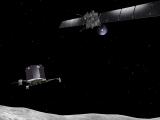
|
15/05/2014
La misión espacial Rosetta observa el "despertar" de su cometa El cometa 67P/Churyumov-Gerasimenko, objetivo de la misión Rosetta (ESA), ha comenzado a desarrollar la coma, una envoltura de polvo que rodea el núcleo |

|
14/05/2014 - 08:00
Qué es una partícula II: Hawking versus Unruh Esta charla pretende ser una introducción divulgativa a algunos de los fenómenos de la denominada Teoría Cuántica de Campos en espacios curvos. Las dos teorías físicas que, a fecha de hoy, describen las leyes de la naturaleza a un nivel más fundamental son la Relatividad General para el campo gravitatorio, y la Teoría Cuántica de Campos para el resto de campos físicos,... Luis Cortés Barbado Sala de Juntas del Nuevo Edificio (IAA-CSIC) |
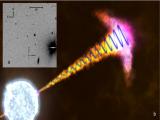
|
30/04/2014
Se detecta, por primera vez, la firma del nacimiento de un agujero negro en una explosión estelar Aunque se conocía que estos fenómenos eran precursores del nacimiento de los agujeros negros, hasta ahora no se había detectado polarización circular en su luz, la firma inequívoca de su formación |
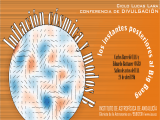
|
24/04/2014 - 17:00
Inflación cósmica y modos B. Los instantes posteriores al Big Bang Hace unas semanas se hacía pública la detección de polarización de tipo magnética en la radiación cósmica de microondas. Esta observación proporciona fuertes indicios de la presencia de ondas gravitacionales en tiempos remotos y podría confirmar la teoría inflacionaria del origen del universo. En esta charla se explicará qué es lo que se ha visto y sus posibles implicaciones. Carlos Barceló y Eduardo Battaner |

|
24/04/2014 - 14:30
Inconsistences in the harmonic analysis of time series The power of asteroseismology relies on the ability to infer the stellar structure from the unambiguous frequency identification of the correspoinding pulsation mode. Hence, the use of a Fourier transform is in the basis of asteroseismic studies. Nevertheless, the difficulties with the interpretation of the frequencies found in many stars lead us to reconsider Fourier analysis and the classical methods used to process time series... Javier Pascual Granado |

|
23/04/2014 - 10:00
About Mars, its atmosphere and the dust El planeta Marte, con su color rojizo, siempre ha despertado la imaginación de la mente humana en diferentes culturas. Ha sido asociado al dios de la guerra, la destrucción y el inframundo. Ya no tenemos miedo a Marte ni a los marcianos como se tenía antaño, nuestra preocupación ahora es si nuestras naves llegarán al planeta rojo. Este fantástico planeta, el cual estamos descubriendo, tiene la... Dominika Dabrowska Sala de Juntas del Nuevo Edificio (IAA-CSIC) |
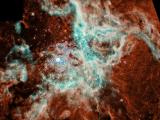
|
15/04/2014
Se reescriben las leyes que determinan cómo el polvo modifica la luz que nos llega de las estrellas Las limitaciones de las leyes empleadas desde 1989 para corregir este efecto, que inducen a errores en la caracterización de las estrellas, hacían necesario un relevo |

|
10/04/2014 - 14:30
Sculpting the Galactic Centre: Astrophysics and fundamental physics with photons and gravitational waves Since 1993 we have known that the Galactic Center (GC) displays a core-like distribution of red giant branch (RGB) stars starting at ~ 1'', which poses a theoretical problem, because the GC should have formed a segregated cusp of old stars. I postulate that the reason for the missing stars in the RGB is closely intertwined with the formation of a formerly existing dense gas disk, an episode that removed the... Dr. Pau Amaro-Seoane |

|
09/04/2014 - 09:30
'El hombre en la Luna: ¿una gran producción de NASA o de Hollywood? Resumen: Aprendemos en el colegio que el momento culminante del siglo XX fue la llegada del hombre a la Luna. Sin embargo, las limitaciones técnicas de la época, junto con la necesidad urgente que tenían los Estados Unidos de no dejarse vencer por Rusia en la carrera espacial podrían haber justificado lo que muchos afirman que es el mayor fraude de la historia de la Humanidad. En esta charla mostrar... Javier Peralta Sala de Juntas del Instituto de Astrofísica de Andalucía (IAA-CSIC) |

|
08/04/2014 - 14:30
The IAA Cloud Service The rise in speed of communications and the decline in prices of storage elements, has caused we can put some of our information on the net in order to make it available easily from anywhere. In this sense, it is said that your information is hosted in the cloud. Nowadays, there are several software solutions to sync and sharing files on the cloud, like Dropbox, Google Drive or Sky Drive, among others. In the IAA, a cloud... Francisco Manuel Bayo Muñoz and Juan José Guijarro Jiménez |

|
03/04/2014 - 14:30
A ring system detected around the Centaur (10199) Chariklo We will report observations of a multichord stellar occultation that revealed the presence of a ring system around the centaur object (10199) Chariklo. There are two dense rings,with respective widths of about 7 and 3 kilometres, optical depths of 0.4 and 0.06, and orbital radii of 391 and 405 kilometres. We will also present more results obtained after the occultation on June 3rd 2013. Photometric and spectroscopic... Dr. Rene Duffard |
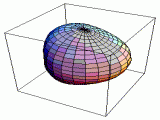
|
01/04/2014
Los "terromotos" estelares permiten conocer el interior de las estrellas más masivas y calientes que el Sol La propagación de ondas sonoras en el interior de las estrellas produce oscilaciones en su superficie, cuyo estudio permite conocer la estructura interna y la edad de las estrellas. Esta técnica se ha mostrado por primera vez eficaz para estudiar en detalle estrellas más masivas que el Sol |
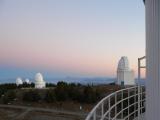
|
31/03/2014
La huelga del Observatorio de Calar Alto comienza a afectar a la investigación del IAA La huelga ha sido convocada por los trabajadores para mostrar su disconformidad con los severos recortes en el presupuesto del observatorio |
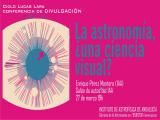
|
27/03/2014 - 18:00
La astronomía, ¿una ciencia visual? Entendemos la astronomía como un área en que la percepción visual cobra gran importancia y los astrónomos como científicos con gran agudeza visual. Veremos que esto no es así y que los avences teóricos y observacionales de la astronomía se han producido cuando hemos dejado de atender tanto a lo que nuestros ojos nos muestran. Enrique Pérez Montero |

|
27/03/2014 - 13:30
New findings on the X-ray emission from Wolf-Rayet nebulae We present the most recent results of XMM-Newton and Chandra observations on the only four Wolf-Rayet (WR) nebulae observed to date. Given the limited number of observations and the different morphological and spectral characteristics of these nebulae, it has been difficult to understand the physics behind the plasma emission. Numerical and analytical models can not explain the 'soft' nature and low plasma temperatures (T~106 K)... Jesús A. Toalá |
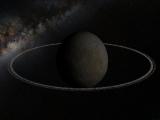
|
26/03/2014
Se detecta, por primera vez, un sistema de anillos en un cuerpo del Sistema Solar que no es un planeta Cariclo, un objeto de unos doscientos cincuenta kilómetros de diámetro, muestra dos anillos compuestos posiblemente por hielo de agua. El hallazgo, en el que participan investigadores del Instituto de Astrofísica de Andalucía (IAA-CSIC), ha sido posible gracias a una ocultación estelar |

|
20/03/2014 - 13:29
The Nature of the IR Emission in Low-Luminosity AGN at Parsec Scales The vast majority of AGN belong to the low-luminosity class (LLAGN): they exhibit a low radiation efficiency (L/Ledd < 10^-3) and the absence of the big blue bump in their spectra, a signature of the accretion disk. The study of LLAGN is a complex task due to the contribution of the host galaxy, whose light outshines these faint nuclei. As a consequence, numerical models are usually compared with relatively poorly defined spectral energy... Juan Antonio Fernández Ontiveros |

|
13/03/2014 - 13:30
Quasars and their emission lines as cosmological probes Quasars are the most luminous stable sources in the Universe. They are currently observed out to redshift z ~ 7 when the Universe was less than one tenth of its present age. Since their discovery 50 years ago astronomers have dreamed of using them as standard candles. Unfortunately quasars cover a very large range (8 dex) of luminosity making them far from standard. I briefly review several methods that can potentially exploit quasars... Dr. Paola Marziani |

|
06/03/2014 - 13:30
La Asociación de Mujeres Investigadoras y Tecnólogas (AMIT) La incorporación de la mujer a la investigación, la docencia o la gestión de la Ciencia y las Humanidades supone un progreso social. La participación de las mujeres en estas esferas, sin embargo, no es igualitaria respecto a los hombres en la España de comienzos del siglo XXI. La presencia de la mujer es dramáticamente decreciente a medida que se sube en los escalones profesionales. AMIT es una... J. Masegosa |
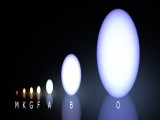
|
06/03/2014
El sondeo GOSSS abre la puerta al estudio de las estrellas de masa extrema GOSSS se ha diseñado para evitar el carácter incompleto y poco homogéneo de las muestras anteriores, que conducían a errores sistemáticos en la clasificación de las estrellas |
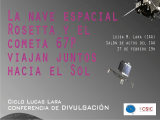
|
27/02/2014 - 18:00
La nave espacial Rosetta y el cometa 67P viajan juntos hacia el Sol Los responsables de la misión han proyectado el viaje de Rosetta hacia el cometa de tal manera que el encuentro con el cometa 67P se produzca cuando este se sitúe a unos 675 millones de kilómetros del Sol. Entonces, el cometa apenas presentará actividad y su forma se reducirá a una bola compuesta de hielo y, posiblemente, material rocoso, materiales que, se piensa, pueden constituir los restos inmaculados de la formación del Sistema Solar. Luisa M. Lara |

|
26/02/2014 - 10:30
Espectroscopía de Elfos y Duendecillos Desde que a finales de los años 80 se descubrieran los duendecillos atmosféricos (Red Sprites) y los elfos (ELVES) muchos han sido los intentos por determinar sus características espectroscópicas. Los Sprites son enormes descargas eléctricas asociadas a intensos rayos positivos nube-tierra que se extienden desde la baja ionosfera hasta bien entrada la mesosfera y unos pocos milisegundos de duración.... Francisco C. Parra Rojas Sala de Juntas del Nuevo Edificio (IAA-CSIC) |
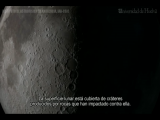
|
24/02/2014
Se observa el mayor impacto de una roca contra la Luna La colisión, observada por investigadores de la Universidad de Huelva y del Instituto de Astrofísica de Andalucía (IAA-CSIC), produjo un destello casi tan brillante como la estrella Polar |

|
20/02/2014 - 13:30
The AGN nature of LINER nuclear sources The origin of the main excitation mechanisms in LINER (Low Ionization Emission Line Region) nuclei are still controversial, with nonstellar photoionization, fast shocks or hot stars as the principal candidates. In the AGN scenario, LINERs could represent the link between more powerful AGN and normal galaxies as suggested by their low X-ray luminosities. Their interest increases as they would be the dominant population of active... Dr. I. Márquez |
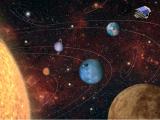
|
20/02/2014
Aprobada la misión PLATO (ESA), que buscará planetas similares al nuestro La misión, compuesta por treinta cuatro telescopios, se lanzará en 2024 y observará más de un millón de estrellas PLATO cuenta con una importante participación española |

|
13/02/2014 - 13:30
A powerful new method to measure the atmospheric water vapour column. We have developed a reliable powerful method to measure the atmospheric column of water vapour (PWV) down to very low levels. For this purpose we use and off-the-shelf cheap spectrometer to measure the equivalent width of the H2O bands at 940nm. In order to calibrate the measurements we use the radiative transfer model included in the package SCIATRAN to produce theoretical solar spectra as observed on the ground, based on simultaneous... Prof. E. Pérez |

|
12/02/2014 - 15:00
Identificación de la contrapartida óptica e infrarroja de la fuente transitoria J0109+6134 detectada por Fermi LAT Estudio de la contrapartida óptica e infrarroja de la fuente de rayos gamma J0109+6134. Investigaciones previas apuntan a que esta fuente es un blazar visto a través del plano galáctico. El propósito principal fue confirmar la contrapartida óptica previamente propuesta, estudiando su comportamiento en el tiempo. Para ello se llevó a cabo una campaña de fotometría diferencial CCD de... Estela del Mar Fernández Valenzuela Sala de Juntas del Instituto de Astrofísica de Andalucía (IAA-CSIC) |
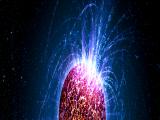
|
11/02/2014
Las estrellas guardan "memoria" de su infancia en las etapas finales [ACTUALIZACIÓN] Se ha descubierto que una característica presente al inicio de la vida de las estrellas desaparece durante su etapa adulta para emerger de nuevo en las fases de estrellas de neutrones y enanas blancas |

|
06/02/2014 - 13:30
The bricks of the Very Large Telescope Interferometer In this talk we will perform a review of the basic principles of the optical/near-infrared interferometry and of the current European facilities to use this observational technique. Particularly, we will describe the interferometric observables used at near-infrared wavelengths. We will provide a review of the current (and future) instruments available at the ESO Very Large Telescope Interferometer (VLTI), their advantages and limitations as... Lic. Joel Sánchez Bermúdez |
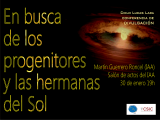
|
30/01/2014 - 18:00
En busca de los progenitores y las hermanas del Sol El Sol, y el Sistema Solar con él, se formó en algún lugar de la Vía Láctea hace cuatro mil quinientos millones de años. Desde entonces se inició un gran viaje a través de la Galaxia que nos ha ido separando más y más del entorno en el que se formó el Sol. Martín Guerrero Roncel |

|
30/01/2014 - 13:30
The CHESS survey of the protostellar shock L1157-B1 Outflows generated by protostars heavily affect the kinematics and chemistry of the hosting molecular cloud due to strong shocks. These shocks heat and compress the ambient dense gas switching on a complex chemistry that leads to an enhancement of the abundance of several species, as reported in "chemically active" outflows, whose archetype is the outflow of the low-mass Class 0 protostar L1157. I'll present the results of... Dr. Gemma Busquet |
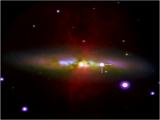
|
30/01/2014
Observan la supernova de tipo Ia más cercana desde 1604 SN 2014J, descubierta en M82, ha movilizado a expertos de todo el mundo. Desde el proyecto Estallidos, coordinado por el IAA, han tomado imágenes de la supernova con el telescopio William Herschel |

|
29/01/2014 - 15:00
Unos cuantos (cuentos) de gravedad Presentación informal de los siguientes contenidos: (1) descripción de las interacciones fundamentales en términos de partículas mediadoras, (2) la teoría clásica de gravedad que se sigue de la autointeracción de gravitones, (3) discusión del problema de la constante cosmológica en este contexto. Habrá galletas fritas. Raúl Carballo Rubio Sala de Juntas del Instituto de Astrofísica de Andalucía (IAA-CSIC) |

|
23/01/2014 - 13:30
Nucleosynthesis and molecular processes in evolved stars Most of the stars (M < 8 solar masses) in the Universe end their lives with a phase of strong mass loss and experience thermal pulses (TP) on the Asymptotic Giant Branch (AGB), just before they form Planetary Nebulae (PNe). They are one of the main contributors to the enrichment of the interstellar medium and thus to the chemical evolution of galaxies. More specifically, the more massive AGB stars form very different isotopes (such as... Dr. Anibal García Hernández |
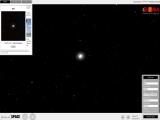
|
22/01/2014
El Proyecto GLORIA presenta Personal Space, una herramienta gratuita para explorar el cosmos desde el portátil Personal Space permite establecer un nexo entre el universo y los eventos significativos en la vida de cada persona |

|
16/01/2014 - 13:30
Bar parameter evolution over the last 7 Gyr The tumbling pattern of a bar is the main parameter characterising its dynamics. This bar pattern speed, the bar ellipticity and its length are the three observational parameters that fully characterize bars. From numerical simulations, their evolution since bar formation is tightly linked to the dark halo in which the bar is formed through dynamical friction and angular momentum exchange. Observational ... Dr. Isabel Pérez |

|
15/01/2014 - 10:00
Damped Lyman-alpha Systems A finales de los 50 y principios de los 60 se descubrieron una serie de fuentes muy intensas en radio. El espectro óptico de estos objetos desconcertó al principio a la comunidad científica, ya que se observaban una serie de lineas en emisión y absorción que no se habían visto antes, hasta que se se cayó en la cuenta de que eran "las de siempre" desplazadas al rojo. Son los Quasi-... Rubén Sánchez Ramírez Sala de Juntas del Instituto de Astrofísica de Andalucía (IAA-CSIC) |